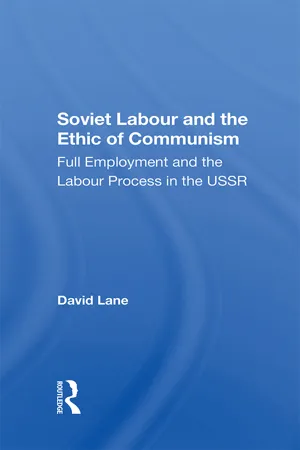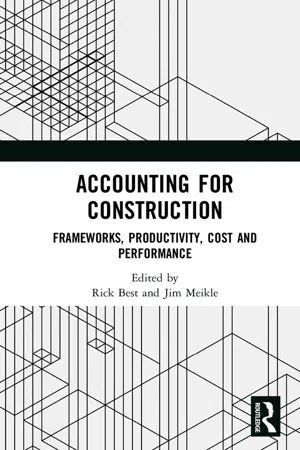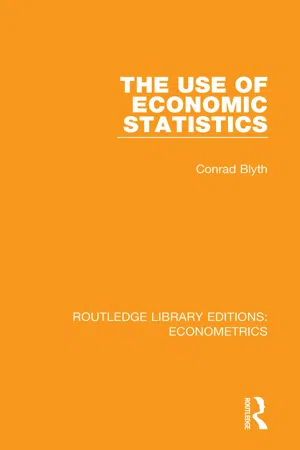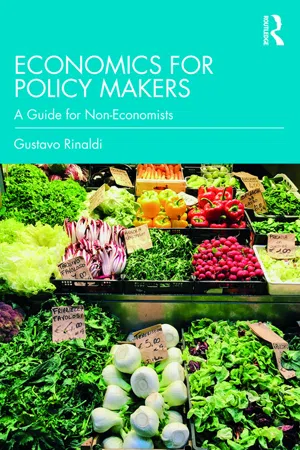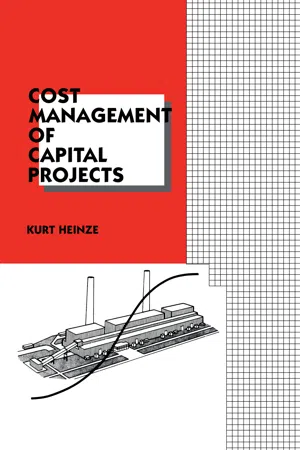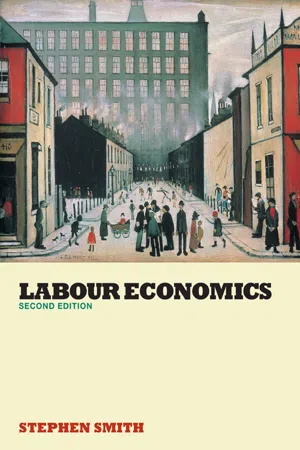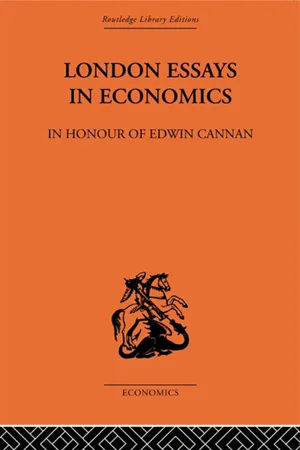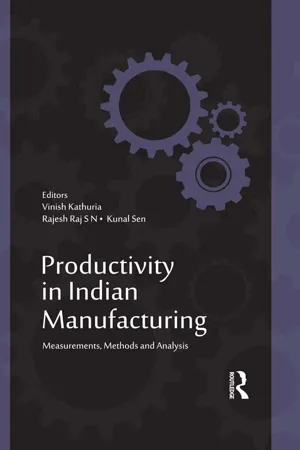Business
Labour Productivity
Labour productivity refers to the amount of output produced per unit of labor input. It is a measure of efficiency and is calculated by dividing the total output by the total number of hours worked. Higher labour productivity indicates that a business is producing more goods or services with the same amount of labor, leading to increased profitability and competitiveness.
Written by Perlego with AI-assistance
Related key terms
Related key terms
1 of 4
Related key terms
1 of 3
10 Key excerpts on "Labour Productivity"
- eBook - ePub
Soviet Labour And The Ethic Of Communism
Full Employment And The Labour Process In The Ussr
- David Lane(Author)
- 2019(Publication Date)
- Routledge(Publisher)
5 Labour ProductivityWhilst Soviet leaders and commentators, as well as those in the West, agree that 'productivity' and especially 'Labour Productivity' are currently the key to economic advance, what these terms entail and how they are to be achieved are matters of ambiguity and dispute. Discussions of 'productivity' involve the whole gamut of features of economic life. As Salter has put it, in 'the interpretation of even the simplest measures of productivity arises a host of very complex problems. For behind productivity lie all the dynamic forces of economic life: technical progress, [capital] accumulation, enterprise, and the institutional pattern of society.'1We may define productivity as the relationship between the aggregate of factor inputs (labour and capital) and the aggregate of outputs. Labour Productivity is the contribution of labour to output. From the viewpoint of the economy, labour input has three main aspects: the quantity of labour employed, its quality and organization. We have discussed the 'quantity' of labour earlier, in terms of the rate of labour utilization. 'Quality' and organization are our concern in this chapter. In making comparisons between societies and over time, it is important to bear in mind that labour is utilized with capital: the age, quantity and quality of the capital stock should also be taken into account in a comprehensive study of productivity. The quality of labour has to do with its effectiveness and efficiency. Experience, effort and educational level influence the ability of employees to perform their tasks efficiently.Labour Productivity, expressed as output per employee in a given period, may rise because the composition of capital has changed or because materials used have improved. Hence measures of 'labour' productivity may reflect changes in other factor inputs. Productivity may also be distinguished from efficiency. Low productivity says nothing about efficiency, because the latter is concerned with the effective utilization of inputs. Output produced may be such that no other organization of the given factors could increase it. Measures of economic efficiency must compare parallel situations, taking account of variations in capital stock, scale of production, quantity and quality of labour. If capital and materials are scarce in relation to labour inputs, then Labour Productivity will be low, though it may not be inefficiently used. The distinction between 'intensive' and extensive Labour Productivity hinges on changes in the content or quality of labour rather than on increasing the amount of labour employed. - Stephen Taylor, Graham Perkins(Authors)
- 2021(Publication Date)
- CIPD - Kogan Page(Publisher)
15Productivity
In this chapter we are going to explore Labour Productivity. This is a subject that is likely to become more and more significant for employing organisations in the future, and particularly in the UK where recent years have seen poor performance in this area when seen from a national economic standpoint. We will start by explaining what exactly is meant by the term ‘Labour Productivity’ and summarise some of the debates about why the UK has not been becoming more productive of late. This is by no means something that economists and commentators agree about. It is common for the term ‘productivity puzzle’ to be used to demonstrate how so many very different views are expressed about it. We will go on to consider some of the steps that employing organisations might take to improve their productivity over the longer term.What is Labour Productivity?
The term is best understood by looking at the three ways in which it is most commonly measured at national level:- GDP divided by the total number of people in paid work (output per worker).
- GDP divided by the total number of jobs (output per job).
- GDP divided by the total number of hours that are worked (output per hour worked).
GDP here refers to the standard measure of national income. It is essentially an estimate for the total value of all the goods and services produced in an economy in a set period of time across the economy. So Labour Productivity is a measure of how much of this ‘added value’ is produced by each worker or each job or in each hour worked on average. The third of these three measures (the one derived from hours worked) is generally considered to be the most useful, but the data collected by government statisticians tends to be less accurate because employers do not typically record this information.It is also important to appreciate that these measures are different. A person can work a lot of hours, but not be so productive. A worker can easily improve his or her output by working more hours, but that does not mean they are becoming any more productive. It is only when output improves when hours of work stay the same, or when it stays the same as hours fall, that we can say productivity is improving.- eBook - ePub
Accounting for Construction
Frameworks, Productivity, Cost and Performance
- Rick Best, Jim Meikle, Rick Best, Jim Meikle(Authors)
- 2019(Publication Date)
- Routledge(Publisher)
7 Measuring capital productivity in construction Michael ReganIntroduction
Productivity is the ratio of output to input in the production process and is a measure of the productive efficiency of the economy. Labour Productivity measures output generated for each unit of labour input and, like capital productivity, is considered a partial productivity measure because of its reliance on a single input. Labour Productivity is calculated for the economy as real gross domestic product (GDP) per hour worked.1 Capital productivity estimates are indicators of real GDP per unit of capital inputs or services used in production. Multifactor productivity (MFP) measures the amount of real output expressed in real value added from inputs of capital and labour.The most comprehensive measure of an economy’s productivity is MFP, which is the efficiency with which producers generate additional output from inputs of capital and labour (Productivity Commission 2015: 2). Growth in Labour Productivity captures improved labour efficiencies as well as the value added from growth in capital productivity through such mechanisms as research and development, technical progress and technology embodied in new plant and equipment. These environmental factors or externalities provide incremental output without the use of additional labour inputs. Investment in technical progress is central to both labour and capital productivity and directly affects MFP. Other externalities on the input side are the pricing of inputs, currency exchange rates (Productivity Commission 2016), public capital expenditures (Pereira and Roca-Sagales 1999; Abiad et al. 2015) and the utilisation of capital (Barnes 2011).On the output side, externalities in the case of commodity exports include exchange rate or commodity price volatility, shifts in demand or a downturn in the business cycle. If investment continues in order to complete projects commenced several years earlier and the value of output diminishes, productivity will decline. Other matters that may affect productivity on the output side include externalities such as mismatch of business and investment cycles (KPMG 2016) and change in the terms of trade (Productivity Commission 2014a, 2016). - eBook - ePub
- Conrad Blyth(Author)
- 2018(Publication Date)
- Routledge(Publisher)
Labour Productivity; it does not depend entirely upon the willingness to work and the skill and experience of the labour force, but also upon the kinds of raw materials used, the quantity and type of machinery, the conditions of work and the way the labour force is organized and managed. Thus Labour Productivity in an industry will depend upon what an industry produces and how it produces it.A distinction must also be made between technically efficient inputs and economical inputs. To return to our motor car example: in similar driving conditions ‘Zip’ petrol gives thirty miles per gallon, and ‘Zoom’ gives twenty-five miles per gallon. If the consumption of other inputs is identical, ‘Zip’ is technically the most efficient petrol. But ‘Zip’ may be so expensive that nobody buys it. Although technically the least efficient, ‘Zoom’ is the most economical. Let us apply these considerations to a comparison of Labour Productivity in the steel industries of two countries, A and B. In A average annual output is 100 tons per worker; in B it is 120. The types of steel produced, the qualities of the raw materials, the willingness to work and the skills of the labour forces are similar; the difference in productivity is due to different machinery and methods of organization chosen to be used in the two countries. The most economical machinery and method of production in A may be that which gives a low Labour Productivity. We can not conclude that low productivity is a sign of economically wasteful methods of production.In this chapter we are going to compare the changes in Labour Productivity during the post-war decade in the various United Kingdom manufacturing industries. Change in output is measured by an index of production; to obtain the change in output per head we shall divide the index of production by an index of employment. These calculations are explained in section 2. In the later sections we consider explanations of the differences between the productivity changes of the various industries. We also introduce a graphical technique for measuring economic relationships. - eBook - ePub
Economics for Policy Makers
A Guide for Non-Economists
- Gustavo Rinaldi(Author)
- 2019(Publication Date)
- Routledge(Publisher)
According to Vollgraaf, even if South Africa has a weaker exchange rate, its competitiveness is not granted because unit labour costs rise quickly, with wage increases outpacing productivity increases. Unit labour cost can also be expressed as the ratio between the wage level and productivity. Its growth may drive the growth of South African inflation. In this article the definition of unit labour cost is “the ratio of total pay to the gross value added”. For firms, what really matters is not wage levels but the ratio between wage levels and Labour Productivity. Therefore, investors do not necessarily choose to invest in countries with low wages; they may choose to invest in countries with higher labour costs, if labour costs are more than compensated for by high productivity. It is not the hourly wage that matters, but the hourly wage compared with the productivity of the hour worked. Finally, it is worth remembering that Labour Productivity only partially depends on the effort and attitude of workers. It also depends on the chosen organizational model, the adopted technology, the invested capital, the market conditions and the general environment in which the firm operates, for example, availability of transport and training infrastructure. Therefore, the unit labour cost is affected by the choices of trade unions, employers and governments.Glossary
average productivityThe ratio between total output and the quantity of an input factor. Average Labour Productivity is the ratio between total output and the number of workers or the number of hours worked. Average Capital Productivity is the ratio between total output and the total invested capital.capital intensiveA technology, business process or industry that requires large amounts of money and other financial resources, but relatively few workers.decreasing marginal productivityThe situation in which increasing output diminishes marginal productivity.flexible technologyA technique which permits the use of input factors in variable proportions, i.e. it permits substitution between factors. - eBook - ePub
- Kurt Heinze(Author)
- 2017(Publication Date)
- CRC Press(Publisher)
Obviously, there is not a clear consensus of what productivity is. The past success of the American industry has been based on products.Productivity emphasized how best to produce those products and how efficient tasks are performed. It is not only the efficiency or the measure of efficiency of production but also the relation to rational business goals.Quality and standardization may be more important than efficiency of output to stay competitive worldwide.In a broader sense it means the best use of any resources - human, capital, material, land - with due regard to the environment. It means productivity of all factors of production, leading to long term viability and competitiveness of the business.Total factor productivity has multiple inputs. The productivity can be likened to an onion with many skins. The core may have strict single input labor units. The second layer is the immediate environment in which that labor is performed. This could be the equipment used, the local organization unit that produces and converts the goods and services. The third layer is the next level environment, which may be the corporate business. There could be many layers before we come to the total factor productivity.As an example, a typist is capable of typing a record number of words per minute. We can call this “very high labor productivity”. The typewriter is an old- fashioned impact machine. This is the second layer of productivity. Unfortunately, the “tool productivity” (equipment) is very low. The letter that was dictated by the manager will have little impact on additional sales or increased production, therefore resulting in a medium “supervisory productivity”, and so on and so on. Any one of those separate “onion skins” are connected and have actually a real time simultaneity rather than sequential stages. Alvin Toffler (44) in his book Powershift writes:“We are, in fact, discovering that “production” neither begins nor ends in the factory. Thus, the latest models of economic production extend the process both upstream and downstream - forward into aftercare or “support” for the product even after it is sold, as in auto repair warrantees or the support expected from the retailer when a person buys a computer. Before long, the conception of production will reach even beyond that to ecologically safe disposal of the product after use.. Similarly, they may extend the definition backward to include such functions as training of the employee, provision of day care, and other services. . Hence, productivity begins even before the worker arrives at the office.” - eBook - ePub
- Stephen W. Smith(Author)
- 2003(Publication Date)
- Routledge(Publisher)
Essentially the demand for labour is a derived demand because no firm demands labour for its own sake. Labour is one of the factors of production which firms combine and organise in order to generate output. Consumers demand goods and services which producers seek to supply profitably. Hence they demand labour to help produce goods and services to meet the requirements of consumers. To illustrate the derived nature of labour demand consider the case where a firm expects demand for its products to increase due to greater personal disposable incomes arising from tax cuts. In such circumstances if the extra supply to meet the rising demand is commensurate with the firm’s business plans, then one may reasonably expect that the demand for labour will increase. Yet whatever the objective of the firm (profit maximisation, growth, market share, etc.) the decision to employ workers will entail a comparison of the costs and benefits to the firm of doing so. Employing labour gives rise to costs – primarily wages but other costs also exist, national insurance, basic training, etc. The benefit to the firm is mainly the revenue generated by sales of goods/services produced by labour. If the net benefit (total benefit less total cost) is not sufficient then the firm will not employ additional labour or it may lay some workers off. However, it is not necessarily the case that all fluctuations in product demand will result in changes in employment. The firm’s labour demand response to variations in product demand will depend upon the significance and duration of such variations. If a firm is faced with short-run or minor changes in demand for its products then it can counter those fluctuations by adjusting its stocks of unsold goods. Substantial and longer-term changes in demand will induce changes in employment. Productivity is a key ingredient for labour demand so we will analyse the productivity performance of the UK.Figure 2.1MICROECONOMIC ANALYSIS OF LABOUR DEMANDIn order to construct the simple neoclassical model of labour demand we reiterate a familiar proposition about the performance of labour in the production process. The generic characteristic of the returns, in the form of output, to the human factor of production incorporates the notion of diminishing returns. No matter what the nature of the production function, as units of labour are added to the production process, when those of land and capital are held constant, eventually the rate of increase of total product in physical terms begins to decrease. This is illustrated in Figure 2.1 .Take the example of a profit maximising firm with a fixed amount of machinery available for a set number of hours per day. As labour is increasingly employed on this fixed capital stock, output grows. Initially up to L1 increasing returns to the factor might exist. But eventually diminishing returns will set in, especially beyond L, as the machinery approaches full capacity utilisation. From the total physical productivity of labour (TPPL ) one can calculate functions for both the average and marginal physical productivity of labour (APPL and MPPL respectively).These will have the general forms shown in Figure 2.2 derived from a total physical product (TPP) function exhibiting diminishing returns.Obviously a firm is not primarily concerned with the physical productivity of labour as such but with the revenues that such labour can generate. Therefore we simply turn marginal physical product into marginal revenue product by multiplying MPPL by MRχ (the marginal revenue from selling output χ). Since in perfect competition MRχ = PX , we can multiply MPPL by the price PX of output to obtain the MRPL . If we assume a constant price for labour, i.e., wage W, then we can draw a total factor outlay (TFO) function as a straight line emanating from the origin. The firm is therefore assumed to be a price taker in both the product and factor markets. Thus Figure 2.1 is transformed into the situation shown in Figure 2.3 - Hugh Dalton, T. E. Gregory(Authors)
- 2013(Publication Date)
- Routledge(Publisher)
The productivity of a unit of labour is then what the whole society with all its capital produces minus what it would produce if that unit were taken away, and because of the interchangeability of workers the productivity of this unit will set the ultimate standard of wages. This productivity represents the specific product of labour, for Clark holds that the extra produce per marginal worker obtained when a smaller number were employed is attributable solely to the capital with which they were working. In fact, however, production cannot be carried on by labour alone, and it is misleading to talk of a product due only to labour. In each of Clark’s marginal employments labour is working with another factor, either no-rent land or equipment, oris making use of existing capital without depriving other workers of their share. The only difference is that no rent or interest is paid; the other agents have for the time being no value. But this is not to say that the instruments produce nothing. For in that case they would not be used. And, even on Clark’s third margin, it is clear that the specific productivity of a worker calculated on his method will differ with variations in the quantity of capital possessed by society. It is never possible to consider the product of labour apart from the organization and equipment, the general economic environment, existing at any time. 147 We want to know, in fact, just why this product differs from time to time and why the margin is where it is. Specific productivity is essentially a value concept; it cannot be carried over into the realm of physical production. As Carver remarked in reviewing Clark’s Distribution of Wealth, “you can’t unscramble eggs.” The product is an inextricable mixture of the various factors which compose it- eBook - ePub
Productivity in Indian Manufacturing
Measurements, Methods and Analysis
- Vinish Kathuria, Rajesh Raj S N, Kunal Sen(Authors)
- 2014(Publication Date)
- Routledge India(Publisher)
In the rest of the study we utilize factory-level (unit-level) data provided by the Annual Survey of Industries (ASI), the main source of information about the industry published by the Central Statistical Organization (CSO), Government of India. Further ahead this chapter critically evaluates the concepts of productivity and efficiency. Methodological issues in measuring productivity and efficiency are also discussed. Then it tries to elucidate some inherent problems involved in the database and defines the variables used in empirical exercise of the study. Additionally, the distribution of jute mills by location in India is displayed before interpreting empirical results and the conclusion.Indices of Productivity and EfficiencyProductivity and efficiency, although closely related, are fundamentally different concepts. Productivity is the ratio of output to input, while inefficiency is the deviation of actual production from the optimum one. In this sense, inefficiency measures underutilization of productive capacity. Higher productivity does not necessarily imply greater efficiency excepting for under constant returns to scale. To measure average productivity of a firm, we do not need to know anything beyond the production point. The ratio of output to a single input provides partial information about input productivity. However, the productive performance of a firm cannot be captured fully by the measure of partial productivity of labour or capital or any single factor of production. To find out the cumulative influence of all interrelated factors on total output, one can utilize the concept of total factor productivity (TFP), a measure of output per unit of all inputs taken together. One popular way of measuring TFP is the estimation of a neoclassical production function.2 Such models assume that the production function is continuous, strictly increasing and quasi-concave.3In the neoclassical approach, the unique source of TFP growth is technical progress. Here, technical progress is defined as the residual of the contribution to output growth after accounting for the contributions made by different inputs, popularly known as ‘Solow residual’, and is originated by better capacity utilization and improved labour skills through learning-by-doing. Solow (1957) developed a methodology for estimating a residual measure (the difference between a weighted sum of the growth rates of capital and labour inputs and the growth rate of output where the weights are taken to be the share of these inputs in national income) from aggregative national income data by assuming that the production function in the economy follows constant returns to scale (CRS), capital and labour inputs are paid their marginal products, and technological change is Hicks-neutral so that shifts in the level of output do not change the marginal rates of substitution of the inputs. This measure of TFPG seems to be quite sensitive to the assumptions regarding returns to scale, level of capital utilization and so on. - eBook - ePub
- Michael Haynes(Author)
- 2020(Publication Date)
- Agenda Publishing(Publisher)
2 How does productivity happen?We have seen that productivity is a ratio. The numerator is some measure of output, the denominator is some measure of input. There are physical productivity measures. We can calculate the tonnage of wheat grown per hectare; we can count the number of cars produced per worker; we could calculate the number of examination passes per 100 students. Leave aside whether this would capture or explain everything we are interested in. These physical measures of productivity can only take us so far. Economists are more interested in inputs as a cost and outputs as value. This potentially gives us the three different types of productivity measure, as set out in Figure 2.1 .If we take land productivity, we can still have a single-input measure that divides the monetary value of output by a physical input or a value input. In agriculture the value of agricultural output per unit of land input is an example. We can also look at Labour Productivity in terms of the value of output per person (effectively an output per head calculation), per worker or, best of all if the data are available, per hour worked. These measures are some of the most basic and widely used measures of productivity. When it comes to the productivity of capital things are different. We cannot add up a plough, a hammer and a computer. We can only measure the value of output against the value of the capital used. To measure the value of output against all inputs too, we need prices. We cannot add hectares of land to numbers of workers and machines as inputs. And we cannot add the weight of wheat to the number of cars or the meals cooked as outputs. We have no choice but to add up the cost of the inputs and the value of outputs.
Index pages curate the most relevant extracts from our library of academic textbooks. They’ve been created using an in-house natural language model (NLM), each adding context and meaning to key research topics.
Explore more topic indexes
Explore more topic indexes
1 of 6
Explore more topic indexes
1 of 4
